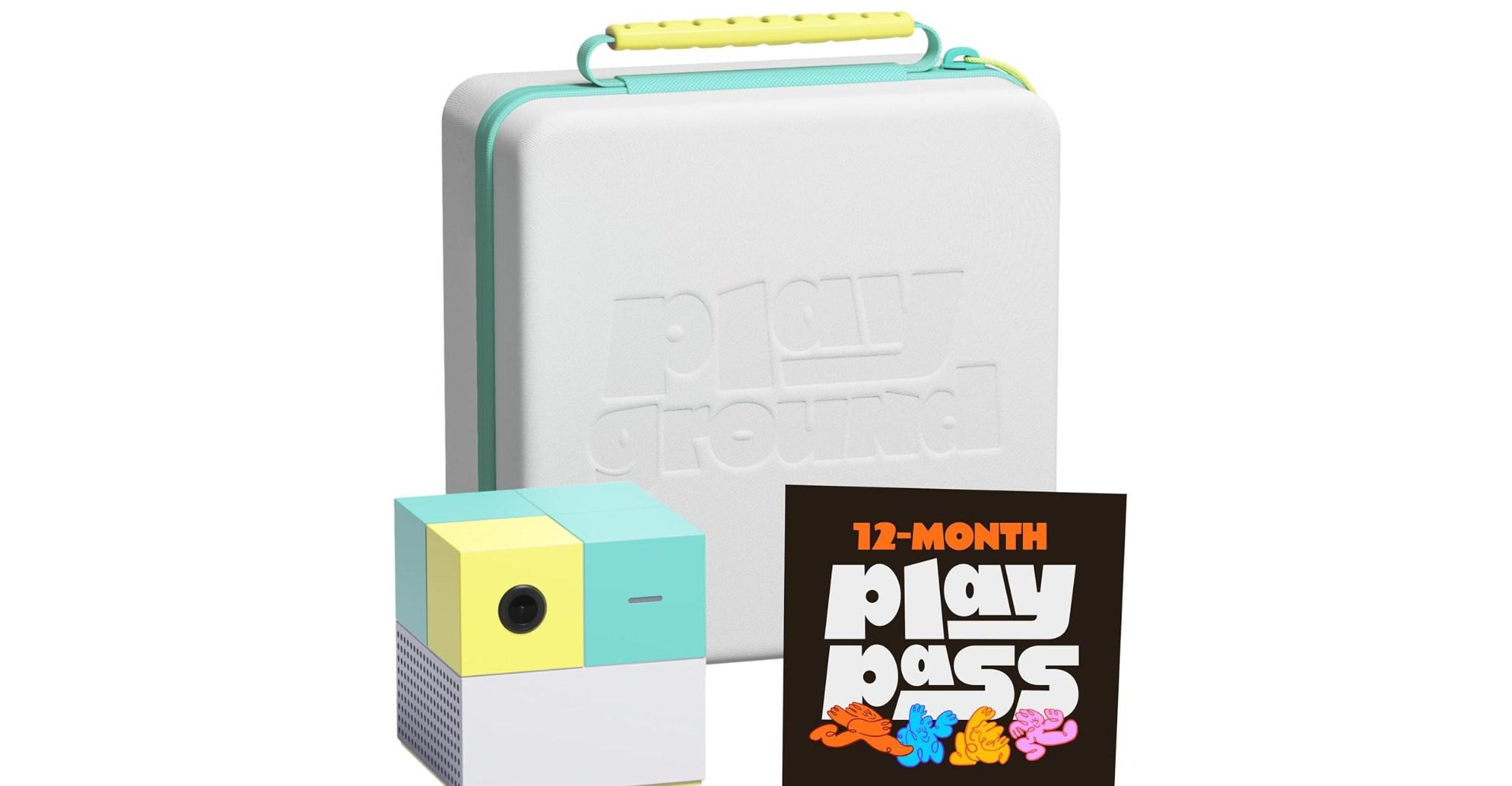A new book on youth suicide clusters offers perspective on prevention.


Between 2000 and 2015 in an affluent, predominately white community in the US, 19 young people died by suicide through what’s known as suicide clusters. These clusters refer to an unusually high rate of suicide for a community over a short period of time, often at least two deaths and one suicide attempt, or three deaths. Suicide clusters are an extreme example of youth mental health struggles — an issue that’s been getting more attention since the pandemic and one that’s at the center of an increasingly charged national conversation around social media and phones.
Anna Mueller, a sociologist at Indiana University Bloomington, and Seth Abrutyn, a sociologist at the University of British Columbia, recently published Life Under Pressure: The Social Roots of Youth Suicide and What to Do About Them, which explores why these clusters happened and how to prevent more. The researchers embedded themselves within the community (which goes by the pseudonym Poplar Grove) to understand the social conditions that preceded and followed the teenagers’ deaths.
Senior policy reporter Rachel Cohen spoke with Mueller and Abrutyn about the youth mental health crisis, the crucial role and responsibility of adults, and how kids take behavioral cues from those around them. This conversation has been lightly edited and condensed for clarity.
Rachel Cohen
There’s been a lot of confusing and often conflicting reports about youth suicide trends, especially since the pandemic. Can you outline for readers what we know?
Anna Mueller
Since 2007, rates of youth suicide in the United States have been increasing pretty significantly and substantially. Not all countries around the world are experiencing this, though some others are.
With the pandemic, I feel like I have to plead the fifth since the suicide data is still sort of inconclusive. For some kids, the pandemic was really hard in terms of mental health. For others, it actually took some pressures away.
Rachel Cohen
Do we know why youth suicide in the US started going up in 2007? What are the best theories?
Seth Abrutyn
It’s a complicated question. As you’re probably aware, there’s been some recent very public academics like Jonathan Haidt and Jean Twenge who have been studying the relationship between social media and mental health, especially among adolescent girls. So there’s some argument that that’s part of it. Of course, that wouldn’t explain why it started in 2007, when social media and smartphones were not really ubiquitous in the way they are now, but it probably plays a role in accelerating or amplifying some of the underlying things that were happening prior.
Another part of the explanation might be that efforts to destigmatize mental health have given people greater license to talk about their mental health. So things that may have been hiding are now out there more, though that doesn’t necessarily explain why suicide rates have gone up, but it may help understand the context.
Kids today are growing up in an extremely destabilized environment, and the economy is extremely precarious. Add that to the fact that since 2007, LGBTQ kids have been able to be more freely out, which also then causes more attention to them and invites more backlash.
Anna Mueller
Everybody asks us that, and I’ll be honest with you, it’s my least favorite question because we just don’t have great data to assess any of these theories. A lot of this really just remains speculation. Social media is something important to consider, but I take a little bit of an issue with the theory that it’s what we should solely be focused on. It’s sort of an excuse to ignore other social problems, like the fact that over that same period, rates of school shootings have increased substantially, and now make things like lockdown drills a normal part of our children’s lives.
There’s also been increasing awareness that climate change is a fundamental threat to everyone’s ability to survive and that the cost of college has wildly increased. So we have a lot of pretty challenging things going on.
Rachel Cohen
I was going to ask you about phones — since as you note there’s a ton of debate right now about their role contributing to worsening mental health, but they didn’t really come up in your book. What role did you see phones play in your research on teen suicide?
Anna Mueller
Phones facilitated kids talking privately and in spaces that adults couldn’t access. And they meant kids had access to information that their parents weren’t aware they received, like kids would often find out a friend had died by suicide by text. I think that’s something adults need to be really aware of — it means the burden is on us to have meaningful conversations with kids about mental health, suicide, and how to get help because we may not be aware when our kid gets hit with some information that’s going to be relevant.
Rachel Cohen
But did it seem like the smartphones were causing the mental health problems?
Seth Abrutyn
Social media didn’t even really come up in the book. When we were in the field [back in 2013–2016], Instagram was out, but it was really more a photographic, artistic thing. Instagram wasn’t about influencers, and Facebook, Vine, and Snapchat were around but kids didn’t all have smartphones yet. Flip phones were still quite available.
I think in our original fieldwork, a lot of the young adults were far more impacted by the internet, like they sat at home on a laptop or something like that. In our new fieldwork, what we see are kids who carry the internet on their phones wherever they go. Quickly we’ve habituated to the ubiquity of smartphones and social media.
Rachel Cohen
In your research, some of the teenagers who died by suicide had loving parents, friends, romantic partners. They didn’t necessarily have mental illness. Can you talk about what you learned with respect to risk factors and protective factors?
Anna Mueller
In the community where we were working, it was a lot of popular kids who had seemingly perfect lives who were dying by suicide. Some of them probably did have undiagnosed mental illnesses, you know, there was some evidence that they were struggling with things like deep depression or eating disorders or other things. But it was never visible. And so what the community saw was this perfect kid just gone for no reason.
It is tough, because on the one hand, what we learned was that this community had really intense expectations for what a good kid and a good family and a good life looked like. And so for kids who didn’t have a lot of life experience to know that there are a lot of options out there for how else to be in this world — they really struggled. Things that helped were having family or other adult mentors who could put things in perspective.
Rachel Cohen
Life Under Pressure is about youth suicide clusters, and I wanted to ask if you could talk more about this idea of “social contagion,” which comes up several times in your book. It seems community leaders were really nervous about saying or doing the wrong thing in the wake of a youth suicide for fear of contributing to another teenager deciding to take their own life. What does the research on social contagion in this context look like?
Anna Mueller
Exposure to suicide, either the attempt or death of somebody that a kid cares about — whether they admire them, identify with them, or really love them — can be a pretty painful experience. Suicide is often about escaping pain, and so seeing people role model suicide can increase that vulnerability for kids. Our work suggests that it’s not just pre-existing risk factors, there’s something uniquely painful about exposure to suicide that can introduce suicide as a new way to cope.
Seth Abrutyn
If we take a step back, suicide is just like almost anything else. Smoking cigarettes, watching television, all the things that we end up doing and liking — a lot of it we’re learning from the people around us. And people are exceptionally vulnerable to influential others. That could be someone that’s very high status that we look up to like a popular kid in school, or it could just be a really close friend that we trust a lot.
In the community, where there are these high-status popular kids dying by suicide, if the messaging is not done correctly by adults, if we don’t have adults who can actually help talk through what’s going on and help kids grieve appropriately, the story can easily become, well, for kids who are under pressure and feel distressed, suicide is an option.
Rachel Cohen
The idea of social contagion has been coming up a lot in debates around youth gender transition too. Some adults say kids are being unduly influenced by their friends and social media regarding things like taking puberty blockers or pursuing gender-affirming surgeries. Other research contests the idea that social contagion is a factor, and some advocates say even the suggestion that gender identity may be susceptible to peer influence is offensive. Does your research in this area offer us any insights here, any more nuanced ways to think about this?
Anna Mueller
I’m not answering this. We can’t answer this. Sorry. We have ongoing work, and we can’t go there. And I don’t know the literature and we can’t go there.
Rachel Cohen
Okay, so you don’t think it’s applicable — the social contagion research you’ve studied in the youth suicide context — to other contexts?
Seth Abrutyn
The only thing I would say is I think the word “contagion” is the word that’s problematic. We’ve tried to actually change that in our own research, and there’s pushback because it’s relatively accepted. It has a sort of folk meaning that everybody can kind of grasp on. The problem is it sounds like how people get the flu in a dormitory, right? But just because everyone shares a heating system and air conditioning system doesn’t mean it will spread like wildfire.
Sociologists don’t think of it that way. When behaviors and beliefs spread, it’s usually because people talk about them with each other, or watch people do something and then talk about it. And then they can text that to their friends and talk about it with each other, and in that sense it is contagious, if you want to call it that. I would call it more like diffusion.
Rachel Cohen
Part of your book is about the need to talk more openly about mental health issues. There’s been this public conversation recently about whether there’s been inadvertent consequences in the push to destigmatize mental illness, with one being that young people may now have become so familiar with the language and frameworks of psychiatric illness that youth can get locked into seeing themselves as unwell.
Oxford professor Lucy Foulkes coined the term prevalence inflation to describe the way that some people consume so much information about anxiety disorders that they begin to interpret normal problems of life as signs of decline in mental health, and she warned of self-fulfilling spirals. Psychology professor Darby Saxbe also noted that teenagers, who are still developing their identities, may be particularly susceptible to taking psychological labels to heart. I wanted to invite you to weigh in on these questions and debate.
Anna Mueller
I’m not sure that I find that idea to be really useful. One of the problems with adults right now is that we’re not listening to the pain that kids are experiencing, or taking it seriously. If I were to advocate for something, I would advocate for seriously listening to kids about their struggles and sources of pain, and working to build a world where kids feel like they matter. Obviously, helping kids build resiliency is incredibly important. We can do a better job at helping our kids navigate challenges, and I’m an advocate of letting kids fail, the road shouldn’t just be perfectly smooth. But I’m pretty fundamentally uncomfortable with not listening to kids’ voices.
Rachel Cohen
I don’t think anyone’s saying don’t listen to kids, but they’re saying that if you encourage kids to think of themselves as anxious, and if you give kids those certain frameworks to diagnose or understand their problems, and as you noted earlier a lot of this information is coming from social media —
Anna Mueller
We think of frames as ways for kids to express themselves. As adults, it’s our job to dig deeper into how they’re framing their lives. Can suicide be an idiom of distress? Yes. Research has shown that some kids use the language of suicide as a way to express themselves to the adults in their lives. Similar things with anxiety, but then our job is to unpack that and discover what does that mean.
Seth Abrutyn
I think what Anna is trying to say, and what our book is trying to say, is that adults are really responsible for the worlds these youth inhabit. And these anxiety frames maybe are something that spreads around on TikTok, but it’s also something that’s being generated by adults, and it’s actually something being generated from real things in their lives, like school shootings.
The way that we talk about them, and the way that we don’t listen to them, is maybe not helpful to kids. As a sociologist, we’re sitting there thinking how do we make schools better places? Well, what are adults doing? How are we making schools safer spaces so that this anxiety frame is not something kids are talking about?
Rachel Cohen
What are the big questions researchers are still grappling with when it comes to youth suicide?
Anna Mueller
I know one thing that emerged for me and Seth after our book is how can we look at how suicide prevention is enacted in the school building, so that we’re catching kids before they get to that? Since we did the fieldwork for Life Under Pressure, our research has involved working collaboratively with schools to strengthen kids’ ability to get meaningful care. We have begun to see some differences in how schools approach suicide prevention that are actually really salient to whether the school experiences an enduring suicide problem or recurring suicide clusters.
Seth Abrutyn
Most schools know that trusted adults are a really important part of the school building. And so thinking about how do we get teachers to do little things, like one school building made sure every teacher between classes was outside of their room for five minutes, just standing in the hallway, just saying hi, smiling, and pointing out that you were there. We often think those things don’t make a big impact, but it does. If a kid is not having a good day, maybe they’re not the most popular kid, but if they see that someone remembers them, someone knows them, it makes a real difference.

YouTube made its video player easier to navigate on TVs
- 9 hours ago

Assailants kill cop, brother in gun attack in KP’s Lakki Marwat
- 16 hours ago

Gold prices dip per tola in Pakistan, global markets
- 19 hours ago

My defense of a $40 cable paperweight – I’m sorry
- 9 hours ago
AI boom seen lifting chipmaking equipment sales 9pc to $126bn in 2026
- 16 hours ago
Pakistan qualify for semi-final of under 19 Asia Cup cricket
- 16 hours ago

Please don’t make airports healthy again. Just make them more efficient.
- 7 hours ago

Young Leaders Conference 2025 highlights social stewardship on day two
- 16 hours ago

A Kinect for kids is outselling Xbox to become the hot console this holiday
- 9 hours ago
Sabalenka named WTA Player of the Year for second straight season
- 19 hours ago
Tagic Army Public School (APS) Peshawar incident completes 11 painful years
- 15 hours ago
Arteta tells critics to back off struggling Gyökeres
- 8 hours ago





